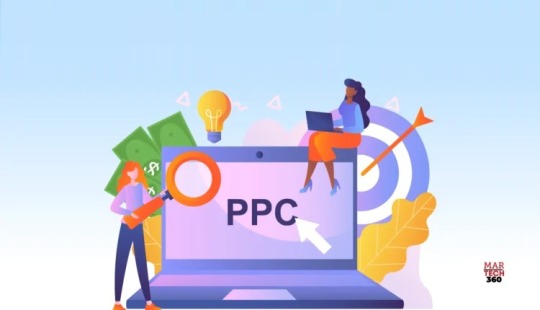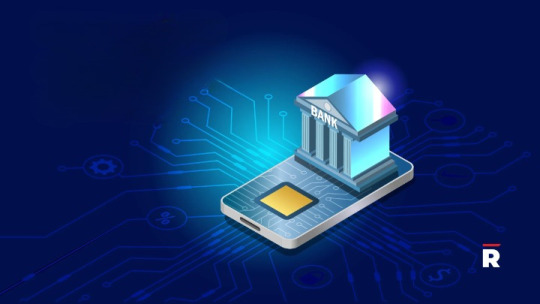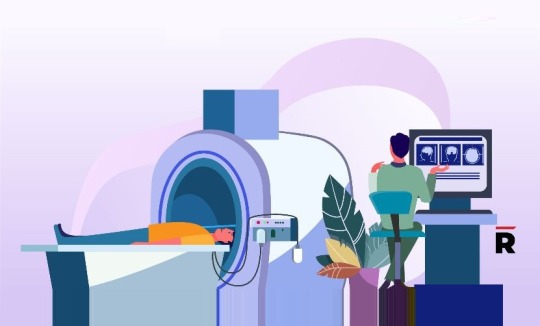Don't wanna be here? Send us removal request.
Text
5 Steps to Optimize Your PPC Campaign for Successful Ads

PPC campaign optimization plays a crucial role in maximizing search engine visibility and driving higher conversion rates. While SEO strategies are effective, PPC campaigns can significantly enhance results by attracting 45% of page clicks through ads. A well-optimized strategy is essential to maintain a competitive edge.
What is PPC Campaign Optimization?
PPC campaign optimization involves continuously reviewing, analyzing, and adjusting campaigns to improve paid search advertising performance. Key aspects include:
Adjusting ad content
Updating landing page information
Refining keyword strategies
PPC campaigns deliver quicker results than SEO, outperforming organic traffic by 50%. Given the global spend on search ads reaching $190.5 billion, effective optimization is crucial to avoid budget wastage on ineffective ads.
5-Step Checklist for Effective PPC Campaign Optimization
Conduct an Audit: Begin by understanding your campaign goals, target audience, and key performance indicators (KPIs). Track metrics like month-over-month and year-over-year performance trends to establish a baseline.
Perform Keyword Research: Thoroughly research keywords to identify those with high click potential. Focus on long-tail keywords for targeted traffic. Utilize tools such as Google Search and SE Ranking to find low-competition, high-volume keywords.
Utilize Demographic Filters: Segment your audience by age, gender, income, education, marital status, and location. Tailor your messaging and adjust bids based on device, day, and time to optimize performance.
Add Relevant Extensions: Enhance ad visibility with extensions like Sitelink, Callout, Structured Snippets, Location, Message, and Call extensions. These extensions drive traffic by providing additional relevant information.
Create Compelling Ad Copies: Craft engaging ad copies with detailed product information, catchy headlines, and localized keywords. Ensure consistency between ad content and landing page details. Use clear calls-to-action (CTAs) and conduct A/B testing for optimal performance.
Benefits of PPC Campaign Optimization
Improved Ad Performance: Enhanced ad relevance boosts clicks and drives traffic.
Increased Mobile Reach: Optimizing for mobile devices increases engagement with smartphone users.
Lower Cost per Acquisition (CPA): Higher conversion rates from optimized campaigns reduce CPA.
Effective Campaign Monitoring: Regular monitoring enables timely adjustments to improve performance.
Targeted Keyword Expansion: Adding relevant keywords expands reach and enhances ad relevance.
Enhanced Quality Score: Improving landing page quality boosts Google’s Quality Score.
Improved Return on Investment (ROI): Enhanced ad performance and reduced costs increase ROI.
Conclusion
PPC campaign optimization is an ongoing process. Monitor campaigns daily initially and avoid premature changes. Analyze data after a month to optimize underperforming elements effectively. Repeat this process to achieve desired results consistently.
0 notes
Text
AMP Emails: A Business Owner's 6-Step Guide for 2024
Email marketing is thriving. Despite occasional claims of its decline, the industry is projected to generate $37.5 billion by 2032, with 4.48 billion users globally. Email's impressive ROI, returning $36 for every $1 spent, underscores its vitality.
Introducing AMP Email: The Future of Email Marketing
What is AMP Email? AMP (Accelerated Mobile Pages) email, launched by Google in 2019, allows marketers to create interactive emails. This open-source library enables tasks such as filling out forms, booking appointments, and purchasing products directly within the email, enhancing user engagement.
Why is AMP Email Important? In a world where over 345 billion emails are sent daily, AMP emails stand out by enabling dynamic interactions directly within the email. This eliminates the need for external landing pages, saving time and energy for marketers.
Steps to Create AMP Emails:
Step 1: Authenticate Sender’s Address Ensure your AMP emails comply with DMARC, SPF, and DKIM security protocols to authenticate the sender.
Register with Email Clients: Whitelist your domain with email clients like Gmail, Mail.ru, and Yahoo Mail to ensure safe delivery to subscribers.
Step 2: Building the AMP Email Since most major ESPs do not support AMP, coding is required to build AMP emails. Key AMP components include:
Media Components: For adding images and GIFs.
Dynamic Components: Such as amp-form, amp-bind, amp-selector, amp-state, and amp-list for interactivity.
AMP Layout Components: Including accordions, carousels, and layouts.
Step 3: Debugging and Previewing AMP Emails Debug your AMP emails to identify and fix issues. Preview your emails to ensure they render correctly in recipients' inboxes.
Step 4: Testing Use tools like Gmail’s AMP playground to draft, preview, and send test AMP emails. Whitelist email addresses in Gmail’s developer settings for testing purposes.
Step 5: Validating AMP emails must be validated using the AMP JS library to ensure they meet safety and user experience standards. Validate your emails before sending them out.
Step 6: Sending Include a new MIME part with the content type text/x-amp-html alongside text/plain or text/html sections. This ensures compatibility with all email clients.
Benefits of AMP Email Marketing:
Enhanced Email Capabilities: AMP components make emails more interactive, allowing users to engage directly with content.
Security: AMP for email eliminates arbitrary third-party features, enhancing security and privacy.
Scalability: Easily include AMP content by adding a new MIME part, ensuring all clients can receive the message.
Increased Personalization: AMP emails enable users to take actions directly from their inbox, improving user engagement and satisfaction.
Interactive Customer Experience: Features like carousels and forms enhance user interaction within the email.
Improved Services: AMP emails offer smarter engagement, making them ideal for promotional and subscriber-list emails.
Bonus: Frequency of Using Interactive Elements in AMP Emails
Strategic Use of AMP Features:
While AMP emails offer dynamic content opportunities, it's essential to assess whether these features genuinely enhance the user experience. Use AMP elements like polls and carousels judiciously, ensuring they add value to the email campaign without overshadowing the core message.
Conclusion:
AMP emails have the potential to revolutionize email marketing. Utilize tools like Mailmodo, Stripo, and AMP.dev to optimize your AMP email campaigns. If your current email marketing strategies aren’t yielding desired results, consider integrating AMP to boost engagement and ROI.
0 notes
Text
Customer Experience Metrics: Essential Measurements and Timing

Creating a lasting impression on customers is a primary goal for every business. But why is this so important?
According to HubSpot, 93% of customers will make repeat purchases from companies that deliver exceptional customer service. Furthermore, nearly 60% of consumers consider outstanding customer service a key factor in maintaining loyalty to a brand.
This is where customer experience metrics come into play. These metrics help companies gauge their performance and identify areas for improvement. This article delves into essential customer experience (CX) metrics and more.
Understanding Customer Experience Metrics
Customer experience metrics are quantifiable indicators that reflect a customer's interaction with a product, service, or brand. These metrics are crucial for businesses to understand customer satisfaction, loyalty, and areas of dissatisfaction.
Bad customer experiences have led 49% of consumers to abandon a brand in the past year. This highlights why companies are increasingly focusing on CX. Companies that prioritize customer service can see a 3.5 times increase in revenue.
To enhance their offerings, businesses must track and analyze customer experience metrics. These key indicators help determine whether customers have had positive or negative experiences.
Key Metrics/KPIs for Tracking Customer Experience
Here are the essential customer experience metrics you should be aware of for a comprehensive approach:
Customer Satisfaction Score (CSAT):
This metric measures user satisfaction with products, websites, or services. A typical CSAT survey asks, "How pleased were you with [product/website] today?" Responses range from 1 (extremely dissatisfied) to 5 (extremely satisfied).
How to calculate CSAT:
Add the number of 4 and 5 ratings.
Divide by the total number of responses.
Multiply by 100.
Customer Effort Score (CES):
CES measures the effort required by customers to complete an action, such as purchasing a product, finding information, or resolving an issue. Ratings range from 1 (very difficult) to 5 or 7 (very easy).
How to measure CES: Ask, "How easy was it for you to [insert action]?" after customers complete a key action like making a purchase or using a service.
Net Promoter Score (NPS):
NPS gauges customer loyalty and satisfaction by asking how likely customers are to recommend your product or service on a scale of 0 to 10. Customers are categorized as:
Detractors (0-6): Unsatisfied customers
Passives (7-8): Satisfied but not enthusiastic customers
Promoters (9-10): Highly satisfied and likely to recommend
How to calculate NPS:
Subtract the percentage of detractors from the percentage of promoters.
Scores can range from -100 to +100, with higher scores indicating better performance.
Customer Churn and Retention:
Churn rate measures the percentage of customers who stop using your product, while retention rate measures your ability to keep customers over time. Reducing churn and increasing retention are crucial since acquiring new customers is more expensive.
How to calculate churn and retention:
For SaaS and subscriptions: Divide the number of cancellations by the starting number of customers.
For e-commerce: Use cohort analysis to track repeat purchases within a specific timeframe.
First Response Time (FRT):
FRT calculates the average time it takes for customer service to respond to an issue. It can be measured in days or hours.
How to calculate FRT:
Sum all initial response times.
Divide by the total number of customer complaints.
Average Resolution Time (ART):
ART measures the average time to resolve support requests. Like FRT, it can be expressed in days or hours.
How to calculate ART:
Add up the length of all customer conversations.
Divide by the total number of tickets or interactions.
Customer Lifetime Value (LTV):
LTV estimates the total revenue a customer will bring over their lifetime.
How to calculate LTV:
For SaaS companies: Divide monthly recurring revenue by the number of customer accounts, then divide by the churn rate.
For e-commerce: Multiply the average order value by purchase frequency and estimated customer lifespan.
LTV is not only a key revenue metric but also an indicator of customer loyalty and satisfaction. Happier customers are more likely to make repeat purchases or remain subscribed, increasing both LTV and revenue.
Managing Customer Experience Metrics
Effective management of customer experience metrics is vital for improving customer interactions. To do this:
Identify metrics that align with business goals.
Build a comprehensive dashboard for monitoring and analysis.
Ensure data accuracy, set benchmarks, and connect metrics to actionable insights.
Continuous monitoring and improvement are necessary for tracking progress and making data-driven decisions that enhance customer experience.
Creating an Outstanding Customer Experience
The most important aspect of using these metrics is not just in tracking them but in using the insights to make meaningful improvements. Studies show that 86% of customers leave a brand after two negative experiences. Therefore, focus on implementing changes based on customer feedback to improve overall satisfaction.
Select metrics based on their ability to generate actionable data, and prioritize improvements that directly address customer needs.
0 notes
Text
Achieving Superior Digital Experiences: 5 Proven Methods for Exceptional Customer Satisfaction
Websites, mobile apps, e-commerce platforms, social media content, smart devices, and AI assistants collectively shape an exceptional digital experience for customers, partners, and employees. In today's digital age, each click, swipe, and interaction carries significant importance.
Businesses are actively enhancing their digital touchpoints, responding to consumer expectations such as faster service (81%) and increased customization (73%). With digital platforms playing a crucial role in our daily lives, understanding how to craft meaningful customer journeys is paramount. Let's delve into strategies for achieving this.
What Are Digital Experiences?
Digital experiences refer to interactions between individuals and organizations facilitated by digital technologies. These interactions span multiple platforms, including websites, mobile applications, and smart devices. Through innovative technologies, businesses can offer unique services and modernize traditional operations, thereby creating impactful digital experiences.
It's important to differentiate between digital experiences and digital customer experiences. While digital experiences refer to individual interactions, digital customer experiences encompass every digital interaction a person has with a company. Enhancing digital customer experiences involves improving user interfaces, mobile responsiveness, design, communication strategies, and real-time data delivery across all digital touchpoints.
5 Effective Strategies to Create an Amazing Digital Experience
Creating an exceptional digital experience requires thoughtful implementation of various strategies. Here are five proven methods supported by credible sources:
1. Personalization through AI-driven Recommendations
Personalized customer engagement is crucial for creating an outstanding digital experience. By leveraging AI-driven recommendations, organizations can provide tailored content and product suggestions based on user preferences and behavior. This enhances user engagement and satisfaction.
Netflix exemplifies successful personalization with its AI-driven recommendation engine, which analyzes data like viewing patterns, search terms, and content interactions. Using deep learning models, collaborative, and content-based filtering, Netflix customizes home pages, genre recommendations, and thumbnail images for each user, continuously improving through A/B testing to boost retention and satisfaction.
2. Seamless Cross-Device Experiences
In today's multi-device world, offering a seamless experience across different devices is essential. Users expect to start an activity on one device and continue it on another without disruption. Technologies like cloud syncing and responsive design make this possible.
Spotify provides a prime example of seamless cross-device experiences. Users can begin listening to a playlist on their phone, continue on their desktop at work, and then transition to a smart speaker at home. Spotify Connect allows users to control playback across devices, ensuring playlists, song progress, and user preferences are preserved regardless of the device.
3. Streamlined Ordering and Return Processes
Simplifying ordering and return processes is vital for improving the digital experience. Organizations should focus on making these processes intuitive, efficient, and hassle-free.
Amazon is known for its customer-centric approach, offering a seamless ordering and return process with just a few clicks. By prioritizing ease of use, Amazon enhances customer satisfaction and loyalty.
4. Innovative Use of Technology
Leveraging innovative technologies can create impressive digital experiences. Organizations can utilize technologies like chatbots, virtual reality, augmented reality, and voice assistants to engage users uniquely and immersively.
Casper, a mattress company, exemplifies innovative technology use with its Insomnobot3000 chatbot, providing companionship during sleepless nights. This creative approach enhances customer engagement and brand affinity.
5. Unified Interface for Multi-Channel Interactions
Providing a unified interface for customer interactions across various digital channels is crucial for creating an exceptional digital experience. Tools like SimpleChat enable customer service representatives to manage interactions on multiple social media and digital channels through one unified interface, streamlining the customer service process and ensuring a consistent, seamless experience for users.
Future of Digital Experience
The future of digital experiences lies in delivering highly personalized, seamless, and interconnected interactions across multiple platforms and devices. As AI and machine learning technologies advance, businesses will better predict user pain points, providing timely and beneficial services and content. This evolution promises to enhance customer satisfaction, engagement, and loyalty through simple and intuitive experiences.
Additionally, integrating emerging technologies such as virtual reality (VR) and augmented reality (AR) can create captivating interactions that transform consumer engagement with companies. By focusing on these advancements, businesses can foster stronger audience relationships, drive growth, and maintain competitiveness in an increasingly digital world.
0 notes
Text
Understanding Content Analytics: Benefits and Importance
In today's digital landscape, understanding audience interaction with your content is essential for optimizing your online presence. Content analytics plays a vital role in this by diving into metrics such as page views, engagement time, and conversion rates to provide insights that help organizations refine their content strategies. This process identifies what resonates with audiences, highlights high-performing content, and pinpoints areas needing improvement.
What Is Content Analytics?
Content analytics, also known as content intelligence, involves measuring and analyzing how users interact with digital content. This helps organizations understand content performance and optimize their strategies. Studies show that 86% of companies prioritize customer understanding.
This practice covers various digital assets like news articles, social media posts, podcasts, blog posts, videos, text documents, and web pages. A content intelligence platform evaluates each asset by tracking crucial metrics such as page views, engagement time, and unique visitors, providing a comprehensive view of audience engagement.
Why Use Content Analytics Tools?
Organizations rely on robust tools to gather essential performance metrics, process data meaningfully, and generate reports that shed light on user interactions with content. Modern analytics software uses advanced technologies like natural language processing, machine learning, contextual discovery, and predictive analytics to identify patterns and trends within digital content. Around 36% of businesses allocate 10% to 29% of their budget to content marketing.
Examples of these tools include Google Analytics, Semrush, HubSpot, and Qualtrics. They use various metrics to gauge user engagement and provide insights into visitor interactions, collectively offering a detailed view of content effectiveness. Common metrics tracked include:
Backlinks: External links pointing to content on the website.
Bounce Rate: Percentage of visitors who view only one page before leaving.
Comments: Number of comments on a post or article.
Conversion Rate: Percentage of visitors completing a specific action, like signing up for a newsletter.
Downloads: Number of times an asset was downloaded.
Engagement Time: Duration users interact with content.
New Visitors: Number of first-time visitors or those returning after a period.
Organic Search: Visitors finding content through search engines.
Pages per Session: Average number of pages viewed per session.
Pageviews: Total number of times an asset was viewed.
Benefits of Content Analytics
Audience Engagement Insights: Provides valuable insights into how audiences interact with content, identifying what engages them, which topics resonate, and how content contributes to conversions and revenue.
Content Strategy Optimization: By analyzing content performance metrics, organizations can refine their content strategy, ensuring a data-driven approach to enhance effectiveness.
Understanding User Behavior: Offers data on user behavior across websites and digital platforms, helping tailor content to meet user preferences and needs.
Improved Content Personalization: Enables personalization of content for individual users or audience segments, enhancing user experience and engagement.
Trend and Opportunity Identification: Spots trends and opportunities in content consumption, allowing proactive creation of relevant content.
Content ROI Evaluation: Measures the return on investment of content initiatives, guiding resource allocation and demonstrating the value of content marketing efforts.
Difference Between Content Analytics and Web Analytics
Content analytics focuses on analyzing and enhancing published content like blogs and social media posts to understand audience interaction and optimize engagement and conversion rates. In contrast, web analytics covers a broader scope, measuring data related to overall web usage, user behavior, and website performance, guiding decisions to improve user experience and achieve business objectives.
Enhancing Social Media Strategies with Content Analytics
Content analytics can enhance social media strategies by providing insights into audience preferences, optimizing content performance, identifying influencers, measuring campaign effectiveness, and refining targeting. By analyzing social media analytics, businesses can tailor content to audience preferences and create engaging content that drives engagement and achieves social media goals.
Conclusion
Content analytics has a promising future as businesses leverage its potential for data-driven decision-making and strategy optimization. As technology advances, analytics will provide deeper insights into audience preferences, content performance, and trends, enabling businesses to create personalized content, measure ROI, and uncover new opportunities for innovation. This will be key to staying competitive in the evolving digital landscape.
0 notes
Text
Top 5 B2B Marketing Cloud Platforms You Need to Know

Marketing cloud platforms serve as comprehensive toolsets for businesses to manage all their digital marketing activities. These platforms facilitate email marketing, social media interactions, audience engagement, and more.
A marketing cloud centralizes these functions, enabling companies to personalize and optimize their marketing efforts effectively.
Why It Matters:
According to Accenture, 91% of customers favor brands that recognize and provide relevant offers. This article highlights the top 5 revolutionary marketing cloud platforms.
What Is a Marketing Cloud Platform?
Marketing cloud platforms are digital solutions designed to support companies in their marketing endeavors. These cloud-based software platforms integrate analytics, social media management, email marketing, and other marketing functionalities. They track vital consumer data, such as behavior and preferences, to aid in profiling, targeting, and creating successful marketing campaigns.
These platforms offer a unified, easy-to-manage interface for all marketing assets, including predictive analytics that assist in decision-making, such as welcoming a new client. By monitoring their visibility and publishing engaging content, companies can establish a strong online presence with cloud-based marketing platforms.
Top 5 Marketing Cloud Platforms for Effective Campaigns
1. Adobe Marketing Cloud
Overview: Adobe Marketing Cloud is a comprehensive suite of marketing tools that help manage content and assets, create personalized campaigns, and gain in-depth customer insights. The suite includes solutions for analytics, audience management, campaign experience, media optimization, and more. Adobe Analytics offers real-time and predictive analytics, which can be integrated with third-party applications for detailed marketing reports and insights.
Key Features:
Advanced Analytics and Reporting: Provides comprehensive insights into campaign performance.
Cross-Channel Marketing: Manages marketing efforts across email, social media, and mobile.
Personalization and Customer Journey Management: Customizes marketing messages based on customer behavior and preferences.
Integration with Adobe Creative Cloud: Seamlessly connects with Adobe's creative tools for content creation.
2. Salesforce Marketing Cloud
Overview: Known for its robust CRM integration and extensive marketing automation capabilities, Salesforce Marketing Cloud is a preferred choice for businesses of all sizes. In H1 2022, Salesforce led the CRM market with a 14.7% share, outperforming competitors like SAP, Oracle, Microsoft, and Adobe.
Key Features:
Email and Mobile Marketing: Facilitates personalized communication via email and mobile devices.
Social Media Management: Manages social media campaigns and interactions.
Customer Journey Builder: Maps customer interactions to create tailored experiences.
Data Management and Analytics: Offers tools for collecting, analyzing, and utilizing customer data.
3. Oracle Marketing Cloud
Overview: Oracle Marketing Cloud provides a comprehensive range of tools for cross-channel marketing, data management, and customer intelligence, catering to both B2B and B2C markets.
Key Features:
Cross-Channel Orchestration: Coordinates marketing efforts across various channels.
Data Management Platform: Manages large volumes of customer data for better segmentation and targeting.
Advanced Analytics: Delivers in-depth analysis of marketing performance and customer behavior.
B2B and B2C Marketing: Customizes marketing strategies for both business and consumer markets.
4. IBM Watson Marketing
Overview: IBM Interactive Marketing offers a wide array of tools to deliver highly personalized and relevant marketing across inbound and outbound channels, both online and offline. The portfolio includes IBM Campaign, IBM Interact, IBM eMessage, IBM Marketing Operations, product recommendations, Email Optimization, and LIVEmail.
Key Features:
AI-Driven Analytics: Utilizes AI to analyze customer data and predict future behaviors.
Campaign Automation: Automates marketing campaigns for enhanced efficiency.
Personalization at Scale: Delivers personalized marketing messages to large audiences.
Integration with IBM Watson AI: Leverages advanced AI for deeper marketing insights.
5. HubSpot Marketing Hub
Overview: HubSpot Marketing Hub is an all-in-one inbound marketing platform ideal for small to mid-sized businesses, offering a comprehensive suite of tools to attract, engage, and delight customers.
Key Features:
Email Marketing and Automation: Simplifies the creation and automation of email campaigns.
Social Media Management: Oversees social media posts and interactions.
Lead Generation and Management: Captures and nurtures leads throughout the buyer’s journey.
Analytics and Reporting: Provides detailed reports on marketing performance.
Conclusion:
As marketing cloud platforms continue to evolve, they will become even more crucial for business success. AI and machine learning will enable deeper personalization and predictive analytics, helping marketers anticipate customer needs more accurately. Seamless cross-channel integration will allow for more cohesive campaigns, while enhanced data privacy and compliance tools will help businesses meet regulatory requirements and maintain customer trust. Continuous innovation in these platforms will empower businesses to create engaging, data-driven marketing strategies that deliver exceptional customer experiences.
0 notes
Text
Everything You Need to Know About Data Center Infrastructure Management (DCIM)
Discover the essentials of data center infrastructure management (DCIM) in this comprehensive guide. Explore its components, current trends, and advantages for efficient data center operations.
Introduction:
In today's digital era, businesses rely heavily on data centers to store, process, and manage vast amounts of data. Managing these complex infrastructures is crucial, with over 10,978 data center locations worldwide as of 2023. Without effective oversight, data centers can suffer from inefficiencies, downtime, and increased costs. This is where Data Center Infrastructure Management (DCIM) proves indispensable. DCIM offers a centralized system to monitor and optimize critical elements such as power usage, cooling systems, networking, and storage, ensuring streamlined data center operations.
What is Data Center Infrastructure Management (DCIM)?
Data Center Infrastructure Management (DCIM) focuses on the centralized management, optimization, and monitoring of data center infrastructure. By integrating facility management with IT, DCIM provides a holistic view of a data center's performance, facilitating efficient operations. DCIM software replaces traditional tools like Excel and Visio, offering real-time monitoring, capacity planning, and simplified management of essential systems. Utilizing specialized hardware, software, and sensors, DCIM helps businesses maximize resource utilization, ensure equipment reliability, and optimize energy efficiency.
Key Components of Data Center Infrastructure:
Facility: Physical location housing data center infrastructure, including security, adequate space, and environmental systems.
Computing Resources: Servers providing processing power, memory, storage, and network connectivity.
Storage Infrastructure: Systems for efficient data storage and management.
Network Infrastructure: Ensures smooth data flow and secure communication.
Power and Cooling Infrastructure: Provides reliable power and maintains optimal temperature and humidity levels.
Cabling Infrastructure: Enables data and power transmission within the data center, critical for connectivity and uptime.
Benefits of Data Center Infrastructure Management:
Improved Uptime: Proactive monitoring and problem resolution enhance uptime.
Enhanced Capacity Planning: Simplifies allocation of new resources and management of connections.
Increased Energy Efficiency: Tracks and optimizes energy consumption in real-time.
Boosted Productivity: Automated workflows and process assurance improve efficiency.
Current Trends in DCIM Solutions:
Intelligent Orchestration: Automates resource allocation to enhance efficiency and resilience.
Edge Computing: Improves latency and performance by placing resources closer to the network edge.
Green Data Centers: Focus on sustainability and energy efficiency.
Advanced Analytics: Identifies trends and anomalies for predictive maintenance.
Integration and Interoperability: Seamless integration with other IT systems for enhanced collaboration and utilization.
Capabilities of DCIM Software:
DCIM software extends traditional IT monitoring by integrating multiple functions into a cohesive approach, managing assets, optimizing capacity, and streamlining changes and energy consumption.
Conclusion:
Data Center Infrastructure Management (DCIM) plays a crucial role in efficiently managing and optimizing data center infrastructure. By integrating IT and facilities management, DCIM offers a unified platform for monitoring and managing critical systems, enhancing operational efficiency, and ensuring reliability. It is indispensable for businesses looking to maximize data center investments, streamline operations, promote sustainability, and foster collaboration.
#InformationTechnology #StorageInfrastructure
0 notes
Text
Understanding the Importance of Risk Management for Banks
Just like any other institution, banks are exposed to numerous risks. According to recent studies, 41% of banking sector respondents increased their investment in risk management technologies by up to 10% in 2022. However, the risks in the banking sector are more significant due to the industry's critical nature and governmental involvement in risk management. Given the myriad of threats banks face, understanding how they handle these risks is crucial. This is where risk management in banking becomes vital.
What is Risk Management in Banking?
Risk management in banking involves the processes by which financial institutions identify, assess, and mitigate the various risks they encounter in their daily operations. These risks include credit risk, market risk, operational risk, and compliance risk, all of which can impact the bank's financial stability and profitability. Effective risk management ensures the safety and soundness of a bank, protecting the interests of depositors and other stakeholders.
In essence, risk management in banking is about making informed and cautious decisions. Picture a tightrope walker maintaining balance high above the ground—that's akin to a bank navigating its operational and investment choices. This process involves identifying potential threats, evaluating their impact, and taking steps to minimize the risk of adverse events. Given that banks manage other people's money, getting this process right is critical.
Importance of Risk Management in Banking
Ensuring Financial Stability: Banks are always at risk, whether related to credit, markets, or operations. Effective risk management allows banks to identify, assess, and mitigate these risks, leading to greater financial stability and reduced chances of losses.
Regulatory Compliance: Banks operate under stringent regulations. Regulatory bodies require banks to implement sound risk management frameworks to ensure the safety and stability of the financial system. Failure to comply can lead to a loss of customer trust and confidence, which is crucial for both investors and regulators.
Stakeholder Protection: Banks must act in the best interests of all stakeholders, including depositors, shareholders, and employees. Proper risk management practices help banks mitigate or avoid risks, thereby protecting customer deposits, maintaining shareholder value, and ensuring job stability.
Improved Decision-Making and Resource Allocation: With effective risk management, banks can make more informed decisions and allocate resources appropriately. Identifying and managing risks optimizes the risk-return trade-off, leading to better profitability through prudent lending decisions, market exposure management, and control of operational risks.
Reputation Protection: A bank's reputation is a valuable asset. Poor risk management can result in bad publicity and loss of public confidence. Maintaining robust risk management practices helps protect and enhance the bank's reputation.
Managing Model Risks: As banks increasingly rely on models due to advances in computing and algorithms, understanding and managing model risks is essential. Mistakes in modeling can lead to poor decision-making and increased risks. For example, McKinsey reported significant losses at banks due to model risks, including a $6 billion loss at a US bank and a $4 billion loss at an Asia-Pacific bank.
Types of Risk Management in Banking
Credit Risk: Credit risk involves the risk of a bank lending money to a customer who may fail to repay, potentially reducing the bank's assets and increasing recovery costs. Mitigating this risk involves understanding the customer's financial position and history and tailoring lending agreements accordingly.
Market Risk: Market risk, or systematic risk, is the potential for external events like economic downturns to negatively impact a bank's investments. Mitigating this risk involves diversifying investment portfolios, focusing on stable industries, adopting long-term investment strategies, and maintaining liquidity.
Operational Risk: Operational risk arises from day-to-day operations, such as errors from inadequate training or IT failures. Cybersecurity risk is a significant component. Mitigation measures include hiring and training competent staff, securing IT infrastructure, and staying updated on cybersecurity threats.
Reputational Risk: Reputational risk occurs when a bank's actions damage its reputation, leading to a loss of customer trust. Mitigating this risk involves defining ethical values, training employees, monitoring media, and preparing contingency plans for transparent communication during incidents.
Liquidity Risk: Liquidity risk refers to the possibility of a bank not having enough liquid assets to meet short-term obligations, especially during a financial crisis. Mitigating this risk involves cash flow forecasting, maintaining contingency funding plans, and conducting stress tests.
Compliance Risk: Compliance risk involves potential penalties and reputational damage from failing to meet regulatory requirements. Mitigation strategies include employing knowledgeable compliance officers, automating processes, and embedding a compliance culture within the organization.
How Risk Management in Banking Works
Identification: The first step in risk management is identifying the risks, understanding their origins, and recognizing why they threaten the bank.
Assessment and Analysis: After identifying risks, the next step is assessing their likelihood and potential impact. This helps prioritize which risks need the most attention and resources.
Mitigation: Mitigation involves creating and implementing policies to reduce the likelihood of risks becoming actual threats, protecting the bank's assets.
Monitoring: Continuous monitoring involves gathering data on threat prevention and response to evaluate the effectiveness of the risk management strategy and researching emerging risks.
Cooperation: Effective risk management requires coordination across different risk areas and mitigation strategies within the bank.
Reporting: Documenting and reviewing risk management efforts helps measure the effectiveness of strategies and track changes in the bank’s overall risk profile, driving continuous improvement.
Future Outlook
By 2025, risk management in banking is expected to play a significant role in strategic planning, business collaboration, and the development of analytics centers of excellence. It will be valued for managing various risk types, preparing for new regulations, and enhancing client experiences. The risk function will differentiate successful banks, but achieving this will require a complete transformation.
#RiskManagement #MarketRisk #BFSI
0 notes
Text
Challenges and Use Cases of IoT Analytics Explained

In our interconnected world, the internet has become integral to our daily lives, driving vast data consumption and production. In 2023, there were 30.73 billion IoT devices, contributing to the Internet of Things (IoT) ecosystem where people, technologies, networks, and tools collaborate to achieve common goals. IoT spending reached a staggering $1.1 trillion USD in 2023.
IoT Analytics Explained
IoT analytics is the process of collecting, processing, and analyzing data generated by IoT devices. This involves transforming raw data into meaningful insights and actionable knowledge. With an increasing number of connected devices, access to valuable information is expanding rapidly, with projections indicating over 25.40 billion IoT-connected devices in the next six years.
Key Components of IoT Analytics
Data Collection: IoT devices are equipped with sensors that gather various data, such as temperature, humidity, pressure, and motion, which is then sent to a central server or cloud platform.
Data Storage: The vast amount of data generated requires robust storage systems capable of handling its volume, speed, and variety.
Data Processing: Collected data must be cleaned, transformed, and organized for analysis to extract valuable insights.
Data Analysis: Various techniques and tools are employed to uncover patterns, trends, and connections within the processed data.
Visualization and Reporting: Insights are presented visually through charts, graphs, and dashboards, making them easier to understand and interpret.
Organizations can leverage IoT analytics to gain insights, improve operations, and make informed decisions across diverse fields, including manufacturing and healthcare.
Applications of IoT Analytics
Predictive Maintenance: IoT analytics enables the monitoring of equipment conditions and prediction of maintenance needs, reducing downtime and improving planning.
Industrial Optimization: Industries like manufacturing, transportation, and utilities can enhance efficiency, product quality, and customer service by analyzing IoT data.
Smart Agriculture: By analyzing data from sensors and weather stations, farmers can optimize irrigation, predict crop yields, and make informed decisions to boost productivity and minimize waste.
Healthcare: IoT is transforming healthcare with remote patient monitoring, real-time health tracking, and personalized care. Analyzing data from wearable devices and medical sensors provides valuable insights for improving diagnostics and treatment outcomes.
Smart Cities: IoT analytics is crucial for building smart cities by optimizing transportation, managing resources efficiently, and enhancing urban planning through data analysis from traffic, environmental, and energy sensors.
Supply Chain Optimization: By tracking inventory, monitoring logistics, and predicting demand, IoT data can streamline processes, reduce costs, and improve customer satisfaction.
Challenges of IoT Analytics
Data Management: Managing the massive and diverse data generated by IoT devices is complex and resource-intensive, requiring careful handling of various data formats.
Storage and Scaling: Traditional storage systems may struggle with the scale and speed of IoT data, necessitating robust and scalable solutions.
Real-Time Processing: Timely decision-making demands real-time or near-real-time processing of data streams, emphasizing low latency and high throughput.
Security and Privacy: Protecting sensitive IoT data from unauthorized access and adhering to privacy regulations is critical, requiring robust encryption and compliance measures.
Interoperability and Integration: Integrating IoT devices and systems from different vendors using various protocols and standards is challenging, demanding seamless data integration.
Future Outlook
The future of IoT analytics is promising, with potential advancements in predictive maintenance, optimized operations, personalized healthcare, and efficient resource management. As connectivity and data generation continue to grow, organizations must address challenges like data security, scalability, and interoperability. By effectively collecting, processing, and analyzing IoT data, businesses can drive innovation, enhance efficiency, and unlock new levels of productivity and connectivity in our evolving world.
0 notes
Text
The Future of Fintech: How Embedded Finance is Leading the Way

Embedded finance is gaining global momentum among businesses. One notable example is the growing preference for 'buy now, pay later' options among consumers. Traditional financial services are known for their extensive paperwork, complex procedures, and limited accessibility, which can hinder efficient financial management and service access for individuals and businesses alike. Integrating financial services into non-financial platforms has historically been costly and time-consuming. However, embedded finance is revolutionizing this process by seamlessly integrating financial services into everyday tasks and platforms. This article provides insights into this emerging niche.
What Is Embedded Finance?
Embedded finance refers to integrating financial services such as payments, lending, insurance, and more into non-financial businesses or platforms, eliminating the need to redirect to traditional financial institutions. This allows businesses to offer tailored financial products and services within their existing platforms, enhancing customer experience and streamlining transactions. While the concept isn't new, as non-banks have offered financial services through private-label credit cards and sales financing for decades, the technology and ease of integration into digital interfaces like apps, digital wallets, and rewards programs are groundbreaking. Embedded finance enables businesses to provide convenient financial services without relying on traditional banks. For instance, e-commerce platforms can offer instant financing at the point of purchase, and SaaS companies can integrate invoicing or payment processing to simplify financial management.
Top 5 Use Cases of Embedded Finance
1. Digital Wallets One of the most practical aspects of embedded finance is the development of digital wallets. These user-friendly smartphone apps securely store digital copies of debit and credit cards, protecting account numbers and other sensitive information. Mobile payment options like Google Pay, Apple Pay, and Samsung Pay have set the standard by enabling users to make payments at contactless terminals and online, streamlining and securing transactions.
2. Oil and Gas Industry The oil and gas industry relies on specialized personnel and equipment at every stage. Marketplaces tailored to this sector allow buyers and suppliers to connect and compare items like heat exchangers, drill bits, and pipes, meeting the specific needs of the industry.
3. Construction Sector Similar to oil and gas, the construction industry has unique requirements. Finding replacement parts for specific equipment can be challenging, even with Google. B2B marketplaces for construction provide more choices for buyers and opportunities for suppliers, simplifying the procurement process.
4. Insurance Embedded finance is transforming the insurance sector by streamlining administration, claims processing, and payments for both firms and clients. Automation reduces manual operations, offering clients convenient payment options for premiums, coinsurance, and deductibles, ultimately improving customer satisfaction and operational efficiency.
5. Grocery and Food Service If you’ve ever paid for grocery pickup or delivery through an app, you’ve encountered embedded finance. This trend is growing in the B2B food and beverage sector, with marketplaces offering a wide range of products, from organic foods to wholesale items, providing flexibility and choice for grocers and restaurateurs.
Healthcare
Embedded finance holds significant potential in the healthcare industry, especially with high out-of-pocket costs in the U.S. In 2022, healthcare spending surpassed $4.5 trillion, averaging $13,493 per person. Major hospitals and health systems now offer payment services and financial solutions through desktop and mobile apps, enabling patients to pay medical bills seamlessly. Innovations like PayZen provide no-interest, no-fee payment plans, potentially reducing costs for insurers, doctors, patients, and hospitals.
Future of Embedded Finance
Embedded finance is poised to shape the future of fintech by merging non-financial service providers with financial services like payment processing, lending, and insurance. This integration offers numerous benefits, including improved customer experiences and engagement. Businesses can provide a seamless and convenient user experience by embedding financial services into non-financial platforms, eliminating the need for customers to switch between different platforms or institutions.
Additionally, embedded finance opens new revenue streams for businesses through transaction fees, interest charges, and other financial products. This diversification can help companies grow and maintain sustainability in the long run.
0 notes
Text
Semiconductor Chips Explained: Different Types and Their Uses

In today’s fast-paced technological landscape, there is a growing demand for faster and more efficient devices. This need, however, brings a significant challenge: balancing cost and energy consumption while enhancing the performance and functionality of electronic gadgets.
Introduction to Semiconductor Chips
Semiconductor chips are crucial in this regard. The global semiconductor market is projected to reach $687 billion by 2025, showcasing the transformative impact of these chips across various sectors, from computers and smartphones to advanced AI systems and IoT devices. Let's delve deeper into this billion-dollar industry.
What Is A Semiconductor Chip?
A semiconductor chip, also known as an integrated circuit or computer chip, is a small electronic device made from semiconductor materials like silicon. It contains millions or even billions of transistors, which are tiny electronic components capable of processing and storing data.
These chips are the backbone of modern technology, found in a vast array of electronic devices including computers, smartphones, cars, and medical equipment. Manufacturing semiconductor chips involves a complex, multi-step process that includes slicing silicon wafers, printing intricate circuit designs, and adding multiple layers of components and interconnects. Leading companies in the semiconductor industry include Samsung, TSMC, Qualcomm, Marvell, and Intel.
Types of Semiconductor Chips
Memory Chips
Function: Store data and programs in computers and other devices.
Types:
RAM (Random-Access Memory): Provides temporary workspaces.
Flash Memory: Stores information permanently.
ROM (Read-Only Memory) and PROM (Programmable Read-Only Memory): Non-volatile memory.
EPROM (Erasable Programmable Read-Only Memory) and EEPROM (Electrically Erasable Programmable Read-Only Memory): Can be reprogrammed.
Microprocessors
Function: Contain CPUs that power servers, PCs, tablets, and smartphones.
Architectures:
32-bit and 64-bit: Used in PCs and servers.
ARM: Common in mobile devices.
Microcontrollers (8-bit, 16-bit, and 24-bit): Found in toys and vehicles.
Graphics Processing Units (GPUs)
Function: Render graphics for electronic displays, enhancing computer performance by offloading graphics tasks from the CPU.
Applications: Modern video games, cryptocurrency mining.
Commodity Integrated Circuits (CICs)
Function: Perform repetitive tasks in devices like barcode scanners.
Types:
ASICs (Application-Specific Integrated Circuits): Custom-designed for specific tasks.
FPGAs (Field-Programmable Gate Arrays): Customizable after manufacturing.
SoCs (Systems on a Chip): Integrate all components into a single chip, used in smartphones.
Analog Chips
Function: Handle continuously varying signals, used in power supplies and sensors.
Components: Include transistors, inductors, capacitors, and resistors.
Mixed-Circuit Semiconductors
Function: Combine digital and analog technologies, used in devices requiring both types of signals.
Examples: Microcontrollers with ADCs (Analog-to-Digital Converters) and DACs (Digital-to-Analog Converters).
Manufacturing Process of Semiconductor Chips
Semiconductor device fabrication involves several steps to create electronic circuits on a silicon wafer. Here’s an overview:
Wafer Preparation: Silicon ingots are shaped and sliced into thin wafers.
Cleaning and Oxidation: Wafers are cleaned and oxidized to form a silicon dioxide layer.
Photolithography: Circuit patterns are transferred onto wafers using UV light and photoresist.
Etching: Unwanted material is removed based on the photoresist pattern.
Doping: Ions are implanted to alter electrical properties.
Deposition: Thin films of materials are deposited using CVD or PVD techniques.
Annealing: Wafers are heated to activate dopants and repair damage.
Testing and Packaging: Finished wafers are tested, diced into individual chips, and packaged for protection.
Conclusion
Semiconductor chips are fundamental to the functionality of nearly every electronic device we use today. They have revolutionized technology by enabling faster, smaller, and more powerful devices. While the semiconductor industry has fueled job creation and economic growth, it also faces challenges related to sustainability and environmental impact. As we continue to push the boundaries of innovation, ethical practices are essential to ensure semiconductors remain vital to our modern world and shape our future.
0 notes
Text
Understanding Kiosk Advertising: Benefits and Applications

Kiosk advertising, a familiar sight in bustling areas like malls and airports, utilizes touchscreen devices to promote products and services. These interactive kiosks facilitate customer engagement through information sharing, product showcasing, and even transaction processing. The market for interactive kiosks is expanding rapidly, projected to reach $45.32 billion by 2028 at a CAGR of 6.9%.
What Is Kiosk Advertising?
Kiosk advertising leverages standalone touchscreens to market offerings effectively. Found in high-traffic locales such as transportation hubs and retail centers, these devices serve diverse purposes from sales to customer service enhancement.
Benefits of Kiosk Advertising
Kiosk advertising provides significant advantages:
Personalization and Cost-effectiveness: Enables tailored marketing efforts without high costs, democratizing marketing capabilities.
Enhanced User Experience: Offers interactive features that educate and serve customers efficiently, boosting satisfaction and loyalty.
Increased Sales Opportunities: Draws foot traffic with compelling content and promotions, amplifying revenue streams.
Convenience and Speed: Reduces wait times, enhancing customer satisfaction and boosting conversion rates.
Where Can You Find Kiosk Advertising?
Kiosk advertising thrives in locations such as malls, airports, stadiums, and transit stations, making it accessible to a wide audience.
Who Should Consider Kiosk Advertising?
Kiosk advertising benefits various sectors including retail, food services, real estate, healthcare, entertainment venues, and financial institutions. It enhances visibility and customer engagement across diverse industries.
Conclusion
Integrating kiosk advertising into your business strategy can revolutionize customer engagement and boost brand visibility. Explore this dynamic marketing tool to expand your reach and enrich your customer interactions effectively.
0 notes
Text
Medical Imaging: Enhancing Patient Outcomes with VR and AR

Medical imaging encompasses various technologies used to view the human body for diagnostic purposes, including X-rays, MRIs, and CT scans. The industry is vast, with the global market for diagnostic imaging devices expected to reach $47.65 billion by 2024. This article delves into critical aspects of medical imaging.
Importance of Medical Imaging
Medical imaging has rapidly become a cornerstone of modern medicine, crucial for both diagnosing and treating diseases. Technologies such as nuclear medicine, CT scans, mammography, X-rays, and ultrasound play pivotal roles. These imaging services are essential for confirming, assessing, and documenting various illnesses and their responses to treatment. However, the high cost of imaging equipment and a lack of trained professionals can limit access, especially in low- and middle-income countries. To address this, the WHO collaborates with manufacturers and partners to improve diagnostic imaging services and provide training focused on patient safety.
Transforming Radiology with Medical Imaging
The field of radiology has been transformed by advances in medical imaging. Innovations in AI and machine learning have significantly enhanced diagnostic accuracy, efficiency, and accessibility. AI can process vast amounts of imaging data, improving diagnostic precision and reducing errors. Additionally, 3D imaging offers new insights into patient health, aiding in better visualization and diagnosis.
Recent technological advancements have restructured computing infrastructure in imaging, leading to improvements in ultrasound, MRI, and X-ray technologies. AI-powered imaging facilitates precise, efficient, and personalized diagnosis and treatment options. Moreover, VR and AR are revolutionizing radiology training and clinical practice, promising a bright future for patient outcomes and the radiology field.
Distinguishing MRI from Medical Imaging
While often used interchangeably, MRI and medical imaging are distinct. Medical imaging includes a broad range of techniques such as nuclear medicine, CT scans, ultrasounds, and X-rays. In contrast, MRI is a specialized imaging method that uses radio waves and a strong magnetic field to produce detailed images of the body’s organs and tissues.
Medical Imaging vs. Radiography
Though similar, medical imaging and radiography are different. Medical imaging encompasses various modalities like nuclear medicine, CT, MRI, ultrasound, and X-rays used for therapeutic and diagnostic purposes. Radiography specifically involves using X-rays to produce images. Radiologists interpret these images to support patient care, therapy monitoring, and disease diagnosis.
VR and AR Applications in Medical Imaging
The integration of VR and AR in medical imaging is exciting and transformative. VR offers immersive virtual environments, while AR superimposes virtual elements onto the real world. These technologies are applied in clinical treatment and radiology training, providing realistic environments for practicing procedures and pre-procedural planning.
AR enhances medical images by overlaying them onto the patient’s body, aiding in precise localization and targeting during interventions. VR and AR are thus revolutionizing how medical professionals train and perform procedures.
Use Cases of Medical Imaging
Diagnosis: Medical imaging helps detect and diagnose various conditions, identifying abnormalities, tumors, fractures, infections, and other issues.
Treatment Planning: It allows precise targeting during treatment, such as in radiation therapy, minimizing damage to healthy tissue.
Interventional Procedures: Imaging guides instruments during minimally invasive procedures, ensuring precision and real-time visualization.
Monitoring Treatment Response: Imaging evaluates the effectiveness of treatments, allowing adjustments as needed.
Preventive Care: Techniques like mammography and CT colonography screen for conditions such as breast and colorectal cancer.
Future Outlook
Future advancements in medical imaging promise even greater diagnostic accuracy, better treatment planning, and improved patient outcomes. The integration of emerging technologies like IoT, machine learning, and AI will enable automated image processing, quicker interpretation, and personalized medicine.
0 notes
Text
Navigating SRM Strategies for 2024: Comprehensive Insights and Trends

Businesses worldwide often face numerous supplier relationship challenges. Issues like supply chain disruptions, underperformance, and rising costs can severely impact a company's viability. Reports indicate that around 85% of companies experience supplier disruption. Furthermore, these disruptions can cost organizations an average of $184 million annually, making them financially catastrophic. In this scenario, Supplier Relationship Management (SRM) provides a strategic solution. To overcome these obstacles and improve business outcomes, SRM is a systematic approach to managing and optimizing supplier relationships. Let's delve deeper into this concept.
What Is Supplier Relationship Management?
Supplier Relationship Management (SRM) enables organizations to evaluate and establish partnerships with suppliers of products, materials, and services. It focuses on assessing each supplier's contribution to success and developing strategies to enhance their performance. SRM helps identify the value each supplier brings and highlights the critical ones necessary for smooth operations. By understanding the importance of each supplier, businesses can forge stronger relationships with them. SRM is a crucial element of supply chain management, beneficial for professionals in operations, project management, or procurement.
How Does Supplier Relationship Management Work?
SRM operates through four key steps:
Segment Suppliers:
Identify and categorize suppliers based on their significance to your business.
Ensure that key suppliers receive appropriate attention.
Develop a Supplier Management Strategy and Framework:
Create a strategic plan for managing each supplier or supplier category.
Prioritize the most critical suppliers.
Align business strategies with processes and assign stakeholders to meet business goals.
Establish a governance and performance management framework.
Establish or Update Vendor Relationships:
Communicate SRM plans, strategies, and initiatives with key suppliers.
Strengthen relationships and gain insights for mutual success.
Execute the SRM Strategy:
Ensure responsible executives or managers implement the SRM strategy.
Monitor progress and identify potential issues in the strategy or its execution.
Uses of Supplier Relationship Management
Key uses of SRM include:
Developing Positive Relationships: SRM is essential for establishing good rapport with suppliers by evaluating their contributions and identifying those with significant influence on outcomes.
Enhancing Business Processes: SRM directs necessary actions with each supplier, much like Customer Relationship Management (CRM) with customers, aiming to improve business procedures.
Supply Chain Management: SRM is extensively used in project management, operations, and procurement, helping assess suppliers' contributions, identify strategic value, and create performance-based supplier scorecards.
Reducing Supply Chain Disruptions: A robust SRM program helps organizations forecast and manage supply chain disruptions due to product quality, dependency, and price fluctuations.
Enhancing Performance Monitoring: SRM allows real-time monitoring of suppliers' performance and strategy execution by establishing key performance indicators (KPIs) and using supplier management dashboards.
Optimizing Efficiency: Effective SRM can decrease costs, increase productivity, and eliminate supply chain redundancies, leveraging supplier connections to boost value and profitability.
Benefits of SRM
Cost Savings: While establishing vendor relationships involves initial costs, it leads to long-term savings. Cooperative relationships reduce availability issues, delays, and quality problems, benefiting customers.
Greater Efficiency: Strong supplier relationships prevent communication issues and build trust, leading to a smoother supply chain with fewer disruptions and faster issue resolution.
Less Price Fluctuation: SRM helps set stable prices for materials, protecting against market volatility, with vendors often offering fixed pricing for long-term contracts.
Continuous Improvement: Mutually beneficial connections foster trust, feedback, and idea exchange. Improved communication enhances efficiency, streamlines processes, and boosts customer service.
Challenges in Supplier Relationship Management
Even with effective SRM, challenges include:
Supplier Diversity: While strong relationships with a few suppliers are beneficial, relying solely on one vendor poses risks. SRM software can streamline administrative tasks, allowing more time to develop new relationships and onboard additional vendors.
Avoiding Misalignment: Suppliers can become competitors or change business models, affecting agreed terms and prices. Establishing diplomatic communication and negotiation plans is crucial to handle these scenarios.
Overcoming Obstacles and Ensuring Continuity: From global politics to pandemics and weather crises, supply chains face numerous challenges. Strong supplier relationships provide some security, but leveraging AI-powered solutions and technologies is essential for data management, issue anticipation, and contingency planning.
Navigating Visibility Challenges: While SRM offers insights into supplier operations, complete visibility is unattainable. Balancing trust with technological aids like blockchain, IoT sensors, and GPS tracking can help maintain clear oversight without infringing on supplier autonomy.
Conclusion
Supplier Relationship Management (SRM) is vital for building strong supplier relationships and enhancing supply chain processes. By implementing a comprehensive SRM program, organizations can effectively manage supplier relationships, optimize efficiency, and achieve mutual benefits. SRM is not just transactional but a strategic framework for long-term relationships and improved business outcomes.
0 notes
Text
Digital Revolution in Agriculture: Essential Technologies for Farmers

The Industrial Revolution brought machinery that drastically increased agricultural productivity, laying the foundation for agricultural technology. As the world population is projected to reach 9.7 billion by 2050, agritech has become a crucial innovation for sustainable farming. Agricultural technology, or agritech, applies machinery, AI, and other technologies to agriculture to enhance sustainability and productivity.
What is Agricultural Technology?
Agricultural technology, or agritech, integrates advanced technologies with farming practices to enhance productivity. It encompasses designing and utilizing equipment that optimizes every stage of crop and animal farming, minimizing resource use while maximizing yields and profitability.
Importance of Agricultural Technology
With the global population projected to surge by 70% by 2050, the demand for food will increase significantly. According to UN statistics, 9.9% of the global population still experiences hunger, making it essential to innovate in agriculture. Agritech helps farmers tackle challenges like unpredictable environmental changes, funding, supply, and crop yield issues. By improving growing conditions, increasing productivity, and reducing environmental impact, agritech ensures safer food production and higher profitability for farmers.
Technologies Transforming Agriculture
AI and Machine Learning (ML): AI and ML transform agriculture into a data-driven sector, allowing farmers to analyze extensive datasets on soil conditions, weather patterns, and crop health. These technologies provide real-time insights and automate operations such as harvesting, weeding, irrigation, and planting schedules.
Precision Farming: Precision farming utilizes advanced tools like drones, sensors, and GPS-guided tractors for data-driven decision-making. These technologies enable precise fertilization, planting, and harvesting, reducing resource waste, minimizing environmental impact, and maximizing yields.
Robotics and Automation: Robotics and automation have replaced labor-intensive tasks in farming. Autonomous tractors and harvesters operate continuously, improving scheduling and uniformity. Agricultural robots collect vital data on soil and crop conditions, facilitating better resource management.
Sustainable Farming Practices: Sustainable practices like regenerative agriculture, crop rotation, cover crops, and no-till farming focus on restoring soil health, reducing carbon emissions, and enhancing biodiversity. Biostimulants improve nutrient uptake and plant resilience, essential for coping with the increasingly erratic global climate.
Impact of Agricultural Technology on Farmers
Agritech enhances farmers' access to agricultural inputs through online platforms, enabling direct sales to food processing companies and increasing profits by eliminating middlemen. For example, the agri-tech startup CropIn raised $14 million to support farmers with SaaS-based solutions. Agritech boosts living standards, reduces poverty, and creates jobs, contributing to economic growth in developing economies. It also improves communication, crop yields, and market access while enhancing farmers' creditworthiness for better funding opportunities.
The Future of Agricultural Technology
Agritech aims to address sustainability, climate change, and food security challenges. Future innovations will include AI and ML for data-driven decisions, blockchain for supply chain transparency, and advanced robotics for further automation. As technology evolves, agritech will play a critical role in meeting the growing food demand without exhausting natural resources.
0 notes
Text
Pros VS Cons: Unpacking the Role of Fourth Party Logistics in Supply Chains

Companies often struggle with integrating multiple logistics providers, leading to fragmented operations and communication breakdowns. This results in average performance. Fourth-party logistics (4PL) offers a solution by serving as a comprehensive logistics coordinator, unifying various providers, technologies, and workflows.
What is Fourth Party Logistics?
Fourth-party logistics (4PL) refers to outsourcing an entire supply chain management and logistics to a single service provider. Unlike third-party logistics (3PL) providers that handle parts of supply chain functions, 4PL providers manage the entire process, acting as the company's primary logistics interface. Their responsibilities include resource planning, technology coordination, strategic planning, and monitoring.
Advantages of Fourth Party Logistics
Expertise in Supply Chain: 4PL providers possess extensive experience and networks, facilitating the efficient flow of goods.
Single Point of Contact: They streamline communication by serving as the sole contact for all logistics activities.
Cost Reduction: Utilizing a 4PL can lower logistics costs by optimizing transportation and reducing operational expenses.
Enhanced Efficiency: 4PL providers continuously review and optimize logistics functions, ensuring improved performance.
Access to Specialized Services: They offer tailored solutions, including transportation options, project planning, and customized supply chain strategies.
Disadvantages of Fourth Party Logistics
Loss of Control: Outsourcing logistics to a 4PL means relinquishing some control over the supply chain.
Dependency on a Single Provider: Relying on one provider can be risky if issues or delays arise.
Limited Customization: Many 4PLs offer standard solutions that may not meet specific business needs.
Communication Challenges: Coordinating with various vendors and suppliers can lead to delays and misunderstandings.
Ongoing Costs: While initial costs are reduced, businesses must consider ongoing fees for 4PL services.
Examples of Fourth Party Logistics Providers
DHL Supply Chain: Offers end-to-end supply chain management through logistics integrators.
UPS Supply Chain Solutions: Integrates logistics and transport operations to optimize supply chains.
DB Schenker: Provides 4PL services like Lead Logistics, covering freight management and supply chain solutions.
Kuehne + Nagel: Tailors end-to-end supply chain management to meet specific needs.
Final Thoughts
Managing logistics involves numerous components, from transportation and warehousing to order fulfillment. As your company expands, a 4PL can provide the expertise and resources needed to streamline logistics. While there are clear advantages, such as improved efficiency and cost savings, there are also drawbacks, like reduced control and potential dependency on a single provider. Ultimately, the decision to use a 4PL should align with your business's unique needs and circumstances.
0 notes
Text
Mastering Procurement Excellence in 2024: 8 Steps for Success

In today's dynamic business landscape, navigating procurement challenges while aligning with strategic goals and cutting costs demands a tailored approach. A well-crafted procurement strategy is the cornerstone, facilitating agile decision-making, process optimization, fortified supplier relationships, and a sustainable competitive edge. Here's a comprehensive roadmap to forging a potent procurement strategy that propels your organization towards its objectives and enhances profitability.
Understanding Procurement Strategy
A procurement strategy is more than just a plan—it's a roadmap for acquiring goods from trusted vendors, ensuring timely delivery within legal frameworks. It encompasses resource allocation, cost management, and risk mitigation strategies tailored to your organization's unique needs, echoing the importance underscored by Gartner's research on customer-centric supply chain strategies and procurement.
8 Steps to Crafting an Effective Procurement Strategy
Harness Procurement Software Solutions Bid farewell to manual processes with their inherent errors and delays. Procurement software streamlines data management, slashing inefficiencies and boosting productivity. With the procurement software market poised to reach $9.5 billion by 2028, investing in these solutions is pivotal for staying ahead.
Analyze Organizational Spending Patterns Initiate strategy development by dissecting your organization's expenditure. Gather insights from suppliers, stakeholders, and internal data to inform your strategy. Leverage tools like Total Cost of Ownership (TCO) to unearth hidden expenses and optimize spending.
Navigate Market Dynamics Shift focus to external market analysis post-internal assessment. Continuously gather data from suppliers to enhance market comprehension and inform decision-making, ensuring agility and adaptability.
Set Clear Objectives Craft a vision anchored in business imperatives, using insights from previous steps to prioritize procurement pain points. Tools like SWOT analysis provide valuable insights into your procurement landscape.
Codify Procurement Policies Compile best practices to streamline procurement processes and mitigate risks identified during analysis.
Develop a Comprehensive Strategy Utilize data to devise a procurement strategy with measurable goals and innovative approaches, driving operational excellence.
Embrace Digital Transformation Adopt a digital procurement strategy to enhance agility and prioritize strategic initiatives over administrative tasks, ensuring a competitive edge in the digital era.
Implementation, Monitoring, and Optimization Continuously monitor and refine your strategy to ensure alignment with evolving business needs and market dynamics.
5 Key Principles for Procurement Success Optimize your approach with these principles:
Ensure seamless procurement chain flow.
Expertly manage supplier risks.
Maintain a centralized supplier repository.
Leverage analytics for insights.
Integrate into the company's innovation ecosystem for sustained relevance.
Parting Thoughts on Procurement Excellence
A well-crafted procurement strategy is the linchpin for aligning procurement efforts with business objectives. By streamlining processes, nurturing supplier relationships, and prioritizing cost efficiencies, organizations can fortify their supply chain and achieve sustainable growth.
0 notes